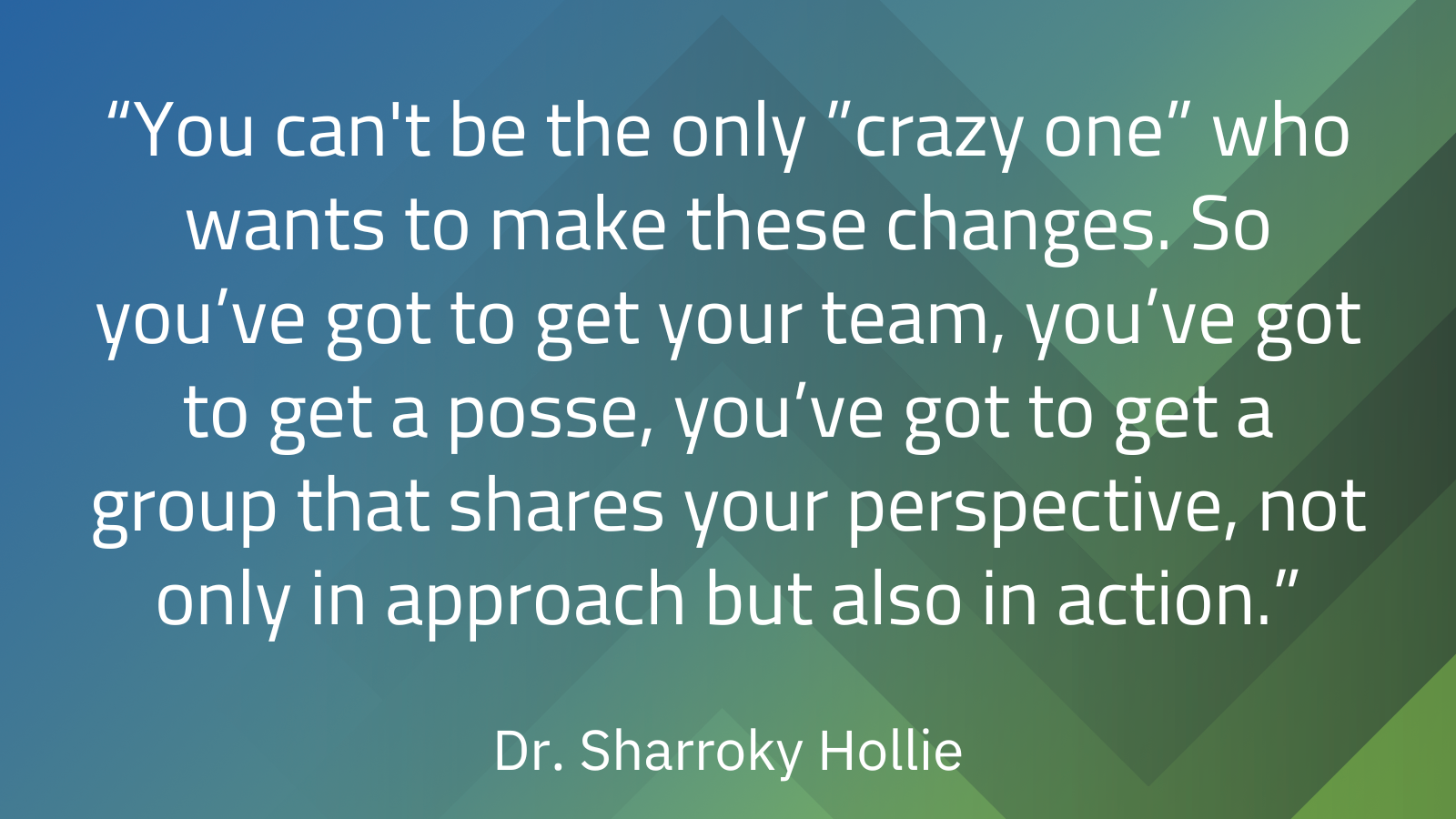Fostering equity through Culturally Responsive Teaching
Dr. Sharroky Hollie discusses his journey and experiences that led him to become an advocate for culturally responsive teaching. He emphasizes the importance of recognizing the inequities in education, highlights the role of language in fostering equity and cultural responsiveness in education, and the importance of quality professional development that provides ongoing support and collaboration.
Thirty years ago, Dr. Sharroky Hollie began his career as a classroom teacher, where he encountered high levels of inequities in many students being inadequately served. He was able to address this within his classroom, but knew the issues extended far beyond those walls. Dr. Hollie has since had an impactful career as a leader in professional development, an author, a motivational speaker and more on the topic of culturally responsive teaching (CRT).
In our latest episode of Highest Aspiration, we interview Dr. Hollie to learn more about the importance of culturally responsive teaching and the climate teachers face today. Listen to the full conversation with Dr. Sharroky Hollie here, and find key takeaways from the conversation below.
What is culturally responsive teaching?
The notion of culturally responsive or relevant teaching traces back to the 1960s and has been explored by many experts and educators since. Dr. Hollie emphasizes that it is composed of many concepts under a large umbrella - but one term he avoids is cultural competence, because his approach avoids determining whether someone is competent or incompetent and focuses more on what everyone can do.
“My term of cultural linguistic responsiveness, I like to focus on it being the verb of response - being responsive. That's what we have to do with our students in a validating and affirming way. I follow the branch of Geneva Gay’s work out of University of Washington. We must respond to our students….I think there’s a lot of varieties of this and educators need to decide what approach they want. Then it helps to point them towards being more responsive to their students.”
From classroom management to the texts and literature students can use to the way vocabulary and language are taught and discussed, culturally responsive teaching extends to all areas of learning and can take a wide variety of formats. The common thread is ensuring that what and how you are teaching is in direct response to who you are teaching and how they learn best.
Role of language in fostering equity
Language is inextricably linked to culture - as Dr. Hollie shares, there is nothing more essential to who a person is than their language. Too often in education, we attempt to address or teach them in an isolated way: “I've seen cases where teachers are looking at a student in this terminology of “Spanish speaker” versus who the student is culturally or ethnically. It's this false separation of language from culture that's contributing to some of the inequity because our system feels like we can treat the language, but we don't have to treat the culture.”
When educators solely label students based on their language proficiency, they risk oversimplifying complex cultural identities. Embracing a more nuanced and holistic perspective allows educators to appreciate the diversity within language groups and tailor instructional strategies that resonate with the cultural contexts of their students.
Institutional vs. individual change
Much like how Dr. Hollie got his start in this work, there are teachers in every district across the country that are implementing CRT in their classrooms. But in order for significant improvement to happen, the change must lie at the systemic, rather than individual level.
“I think regardless if we're talking about it in the context of specifically multilingual or beyond, for me it's really about districts or schools first just having honest, open, transparent conversation that there are some students that they're failing and that's not the end of the world, but that it starts with that admission and that we have to do something about it.”
Without the proper infrastructure and support in place, change will remain contained to individual classrooms. Dr. Hollie shares three key steps that must happen to scale the impact and promote equity.
-
Recognition of where the system they are in is falling short in serving their diverse student population
-
Development of a multi-pronged approach where leaders recognize that there is no singular solution or a one-size-fits-all approach, and instead prioritize offering a variety of techniques so that every student can benefit
-
Implement a feedback loop to ensure that any professional learning and growth or development that is happening is sustained and continuing over time, rather than a one-and-done mentality around PD.
Finally, don’t be bogged down by the 10-15% in the profession who are against this progress. Remember there is strength in numbers, and your collective effort is building a brighter future for all students.

To learn more about Dr. Hollie’s approach to culturally responsive teaching, listen to our full conversation, download the full episode transcript, and visit his website.
